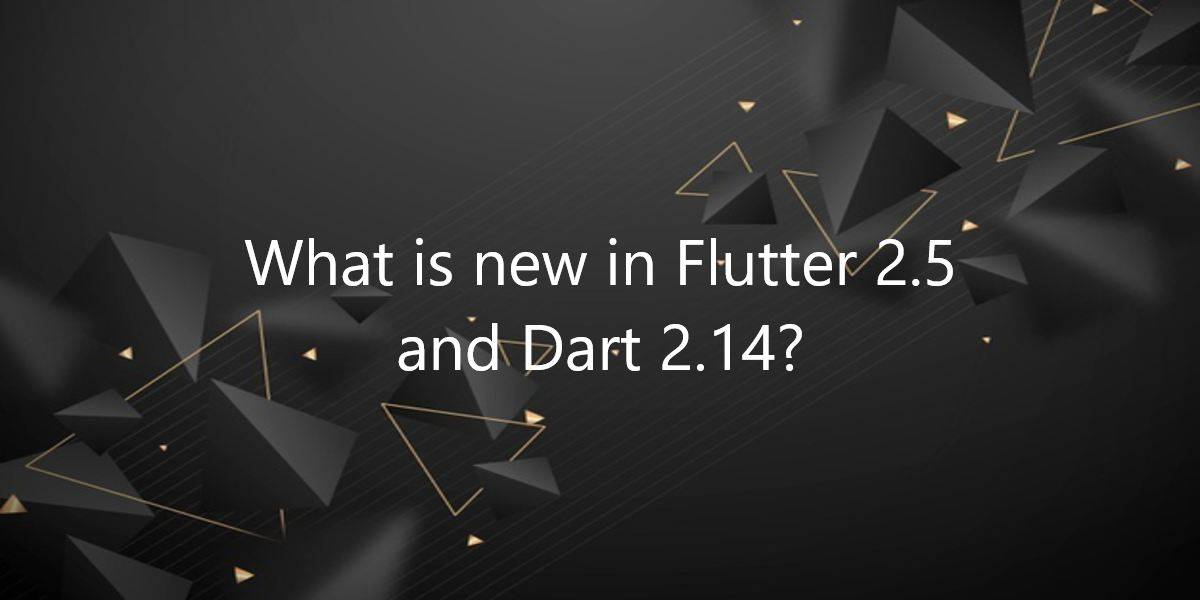What is new in Flutter 2.5 and Dart 2.14?
Flutter 2.5 was released with 4600 closed issues and 3932 merged PR. So, in this article, we’ll look at what’s new in Flutter 2.5 and Dart 2.14 and how they can help Flutter app developers.
What is new in Flutter 2.5 and Dart 2.14?
Flutter 2.5 & Dart 2.14 have been released at the same time with performance improvements from their contemporary releases. In addition, there are some new features such as Android full-screen support, adding useful features, and updated text editing to make it easier to switch keyboard shortcuts. It also includes new help for adding dependencies in your Visual Studio Code projects, new help for getting data from your test runs in IntelliJ/Android Studio. In addition, there are completely different application layouts that you can enter into your actual Flutter application.
Performance Improvements:
This release accompanies a few performance enhancements. iOS has less Jank, less CPU and performance consumption, and tests have removed Jank from this source to improve performance. Additionally, iOS 8 help is deprecated. Another reason for junk is that the garbage collector (GC) pauses the UI thread to reclaim memory. In this release, the memory of unused images is reused, resulting in a significant reduction in GC.
Another performance improvement for Flutter 2.5 is the delay in sending messages between Dart and Objective C / Swift (iOS) or Dart and Java / Kotlin (Android).
Dart 2.14:
Flutter is not Flutter without the dart language and runtime on which it is built. This version of Flutter comes with Dart 2.14. The new release of Dart comes with new formatting to make cascades more clear, new pub support for ignoring files, and new language features, including the return of the legendary triple shift operator.
In addition, one of the great things about Dart 2.14 is that this version creates a standard lint set that is shared between new darts and flutter projects that are out of the box and ready to use. Not only does this fluff occur when you create a new darts or flutter project, but you can add the same analysis to your existing app in just a few steps.
Framework: Android full screen, Material You & text editing shortcuts
The Flutter 2.5 release includes a number of fixes and improvements to the framework. They’ve fixed a set of related issues around full-screen modes with nearly 100 thumbs up between them. Mode names are Lean, Sticky, Sticky Immersive, and Edge-to-Edge. This change also adds a way to hear changes in other modes in full screen. For example, if a user interacts with the app and returns to the system UI, the developer can write code to return to full-screen mode or do something else.
Another great contribution from the community is the Scaffold Messenger extension to support ScaffoldMessenger. You may remember the ScaffoldMessenger from the Flutter 2.0 release announcement. It is a more robust way to show Snackbars at the bottom of the screen to provide users with notifications. In Flutter 2.5, you can now add banners on top of your scaffolding. The banner stays in place until the user closes it.
Breaking changes & deprecations:
The following are the breaking changes in the Flutter 2.5 release:
- Default drag scrolling devices
- Deprecated API removed after v2.2
- Introducing package:flutter_lints
- ThemeData’s accent properties have been deprecated
- GestureRecognizer Cleanup
- Replace AnimationSheetBuilder.display with collate
- Using HTML slots to render platform views in the web
- Migrate LogicalKeySet to SingleActivator
For the full list of breaking changes since the 1.17 release, see flutter.dev.
Conclusion:
Thanks for being with us on a Flutter Journey!
So, in this article, we have seen what is new in Flutter 2.5 and Dart 2.14. Make sure to check out our other article related to Flutter. Also, feel free to comment and provide any other suggestions regarding Flutter.
Contemporary ventures
Recent blog
ready to get started?
Fill out the form below and we will be in touch soon!
"*" indicates required fields













